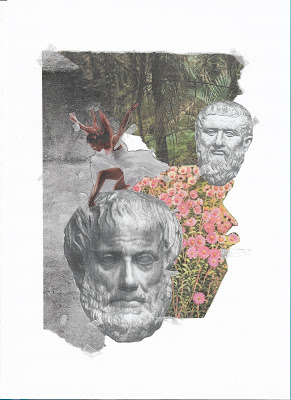ANXIETY
These images show experimentation with creating objective symbols for the subjective word 'anxiety'. For these first experiments I worked with using masking tape and ink, using a piece of cling film to create 'blotches' of ink over the tape. These were then scanned into a computer and manipulated into jagged shapes to represent the feeling of anxiety.
My next step in this process was to recreate some of these images using coloured tape to create a contrast in the colour palette you would normally associate with being anxious. These were placed onto square grid paper in order to make the symbols objective. Other experimentation with these forms were placed onto Otl Aicher's 45 degree grid, which was used in his designs for the pictograms of the 1972 Munich Olympics which meant the images were universal and able to be read and interpreted by people from all over the world who were taking part in these Olympic games.


Another method I used to create objective symbols of the subjective word 'anxiety' was by taking a letterform which I felt looked the most anxious and manipulating this letterform through fragmentation, cutting and photocopying it to create distortions which helped further represent the word. The letterform chosen for this experimentation was 'X'. These symbols were inspired by a typeface called 'Swervin'' designed by Houman Momtazian and Ghazaal Vojdani in 2008. The typeface used one symbol which was manipulated through various filters on an app called photobooth. The main filter used for this typeface was the swirl which meant deciphering forms into letters. In my experimentations I took my already distorted letterform and used a scanner to create various effects that meant the symbols could potentially be used as a typeface or supergraphics. I also recreated some of these using black ink.
OBSCURE
The next subjective word I chose was 'obscure'. These images show exploration with the use of shape by obscuring the form of the circle through various movements and rotations, as well as layering the shapes. These experimentations were based on a lithograph study in the rotation of lines made by a crayon.
It has been found that we appreciate rounded and circular forms more with our senses rather than the mind, and is reminiscent of childhood memories, eternity and as having a precise centre point (Adrian Frutiger, Signs, Symbols and their Meaning). Frutiger also believed that the form of the circle is already associated with movements which is why I chose to experiment with such methods.
My next step in this process involved scanning these circular forms using similar rotations and movements to obscure them even further. I then cut out elements of these scans to place onto Aicher's 45 degree grid and create a set of 'obscure pictograms'. It can also be considered that the circle is already an obscure shape, as it does not have any points like most other shapes, which I therefore felt worked with the idea of obscurity better than other shapes.
As well as obscuring the forms of shapes themselves, I looked at how I could create an obscure grid to work with. To do this I used grid paper which I cut apart and manipulated, sticking areas slightly out of line with the rest of the grid so that it no longer created even squares, but still remained objective in that I would be using this grid as a rule to create symbols. I then worked over the top of this to obscure the lines and interrupt their paths.


















































